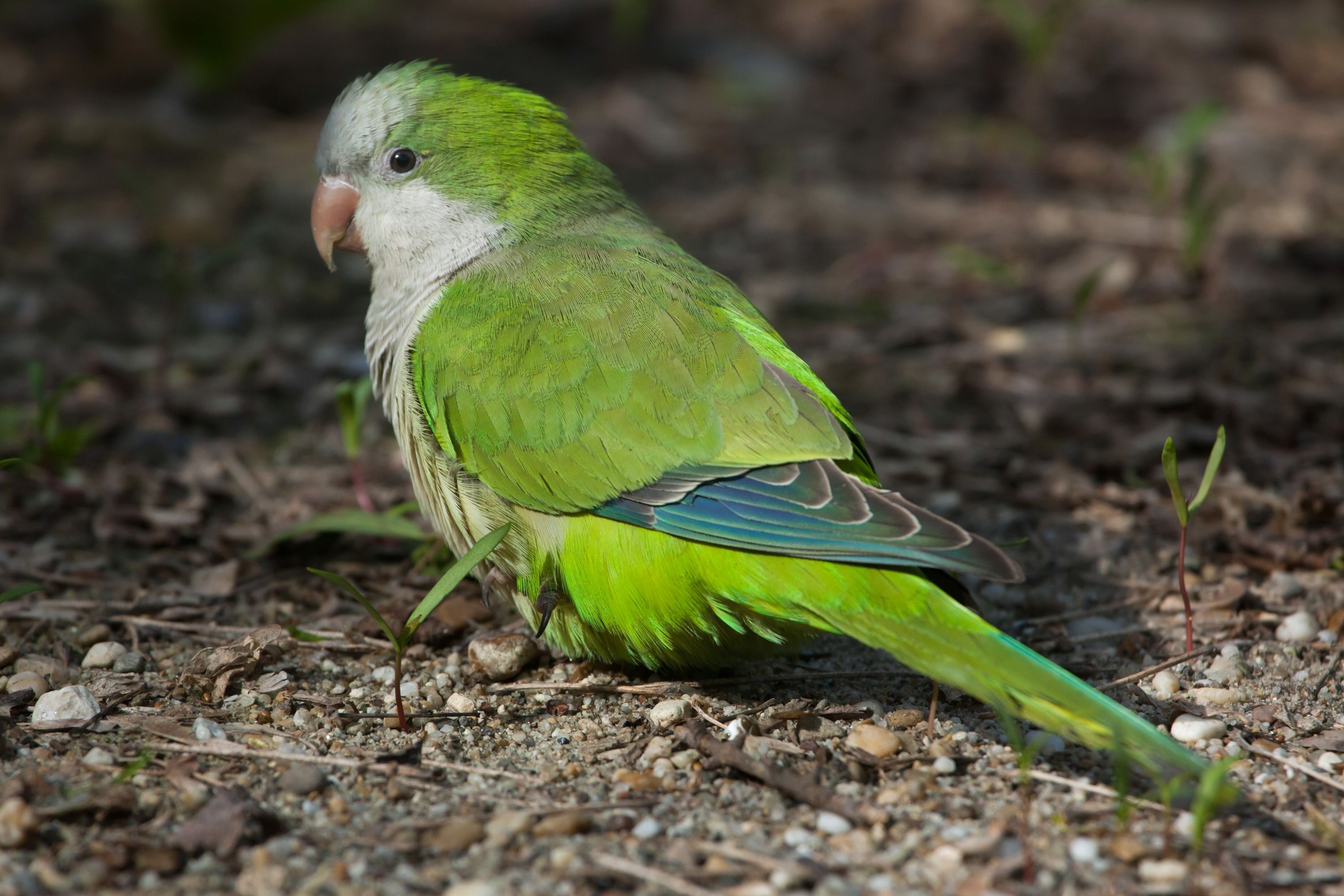Monk parakeet
(Myiopsitta monachus)

Description
The monk parakeet (Myiopsitta monachus), also known as the Quaker parrot, is a species of true parrot in the family Psittacidae. It is a small, bright-green parrot with a greyish breast and greenish-yellow abdomen. Its average lifespan is 20–30 years. It originates from the temperate to subtropical areas of Argentina and the surrounding countries in South America. Self-sustaining feral populations occur in many places, mainly in North America and Europe. The monk parakeet was described by French polymath Georges-Louis Leclerc, Comte de Buffon, in 1780 in his Histoire Naturelle des Oiseaux. The bird was also illustrated in a hand-coloured plate engraved by François-Nicolas Martinet in the Planches Enluminées D'Histoire Naturelle, which was produced under the supervision of Edme-Louis Daubenton to accompany Buffon's text. Neither the plate caption nor Buffon's description included a scientific name, but in 1783, Dutch naturalist Pieter Boddaert coined the binomial name Psittacus monachus in his catalogue of the Planches Enluminées. As Buffon did not specify the origin of his specimen, in 1937 the American ornithologist James Peters assigned the type location as Montevideo, Uruguay. The nominate subspecies of this parakeet is 29 cm (11 in) long on average, with a 48-centimetre (19 in) wingspan, and weighs 100 g (3.5 oz). Females tend to be 10–20% smaller, but can only be reliably sexed by DNA or feather testing. It has bright-green upperparts. The forehead and breast are pale gray with darker scalloping and the rest of the underparts are very light-green to yellow. The remiges are dark blue, and the tail is long and tapering. The bill is orange. The call is a loud and throaty chape(-yee) or quak quaki quak-wi quarr, and screeches skveet. The monk parakeet is globally very common. In Argentina, Brazil, and Uruguay, monk parakeets are regarded as major agricultural pests (as noted by Charles Darwin, among others). Their population explosion in South American rural areas seems to be associated with the expansion of eucalyptus forestry for paper pulp production, which offers the bird the opportunity to build protected nests in artificial forests where ecological competition from other species is limited.
Taxonomic tree:







